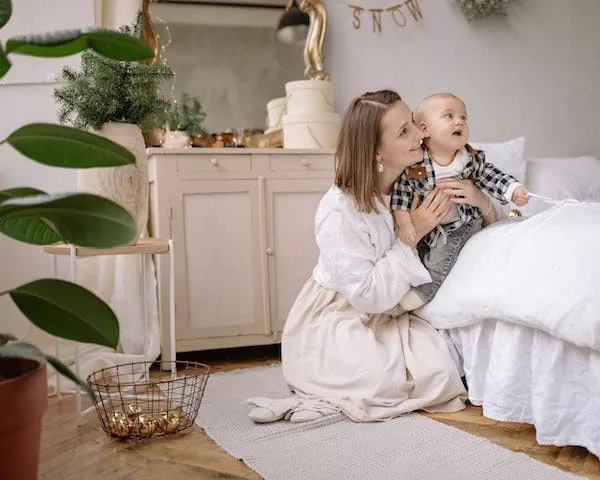As the winter season rolls in, parents often find themselves pondering how to keep their newborns snug and warm during chilly nights. Properly dressing your newborn for sleep in winter is crucial to ensure their comfort, safety, and uninterrupted rest. In this comprehensive guide, we will provide you with essential tips and recommendations to help you dress your little one for a cozy winter sleep.
Layering:
The Key to Optimal Warmth Layering is the cornerstone of dressing your newborn for winter sleep. Instead of bundling them up in one heavy garment, it’s best to use multiple thin layers. This allows you to adjust their clothing easily according to the temperature of the room and prevents overheating. A good rule of thumb is to dress your baby in one more layer than what you’re comfortable wearing in the same environment.
Choosing the Right Fabric:
Opt for soft, breathable, and natural fabrics such as cotton or bamboo for your newborn’s sleepwear. These materials help regulate body temperature, keeping your baby warm without causing overheating or irritation to their delicate skin. Avoid synthetic fabrics, as they can trap heat and moisture, leading to discomfort.
Sleepsuits and Onesies:
Begin by dressing your newborn in a comfortable, well-fitting cotton onesie or sleepsuit. Choose those with long sleeves and legs to provide adequate coverage. Look for options with built-in feet or consider adding socks to keep their tiny toes warm. Keep in mind that babies tend to wiggle out of loose blankets, so sleep suits with attached mittens can be helpful to prevent them from scratching their face.
Add a Layer:
After dressing your baby in a onesie or sleepsuit, you can add another layer for added warmth. This can be a soft and cozy sleep sack or a swaddle made from breathable fabric. A sleep sack provides an extra layer of insulation without the need for a loose blanket, reducing the risk of suffocation or entanglement.
Hat and Mittens:
A lot of heat can escape through your baby’s head, so it’s important to keep it covered. Choose a lightweight and snug-fitting hat that covers their ears to provide warmth. Mittens are also essential to keep their tiny hands cozy, especially if they tend to scratch their face or have cold hands.
Room Temperature and Bedding:
Maintaining the right room temperature is crucial for your newborn’s comfort and safety. The ideal temperature for a baby’s room is around 68-72°F (20-22°C). Use a reliable room thermometer to monitor the temperature accurately. Avoid using electric blankets or hot water bottles, as they can pose a risk of burns or overheating.
Assessing Your Baby’s Comfort:
Always pay close attention to your baby’s cues and adjust their clothing accordingly. Touch their tummy or back to check if they’re too warm or too cold. Look for signs of sweating, flushed cheeks, or cool extremities, which indicate the need for adjustments in their clothing layers.
Safety First:
While it’s important to keep your newborn warm, it’s equally vital to ensure their safety while they sleep. Avoid using blankets, quilts, or pillows in the crib, as they can increase the risk of suffocation or Sudden Infant Death Syndrome (SIDS). Instead, opt for sleep sacks, swaddles, or wearable blankets that are specifically designed for infants.
Conclusion:
Dressing your newborn for a cozy winter sleep involves layering their clothing, choosing the right fabrics, and paying attention to their comfort and safety. By following these essential tips and recommendations, you can provide your little one with a warm and comfortable sleeping environment throughout the winter season. Remember, each baby is unique, so it’s important to adapt these guidelines to suit your newborn’s individual needs. Stay warm, and enjoy the precious moments of your baby’s peaceful slumber this winter!


